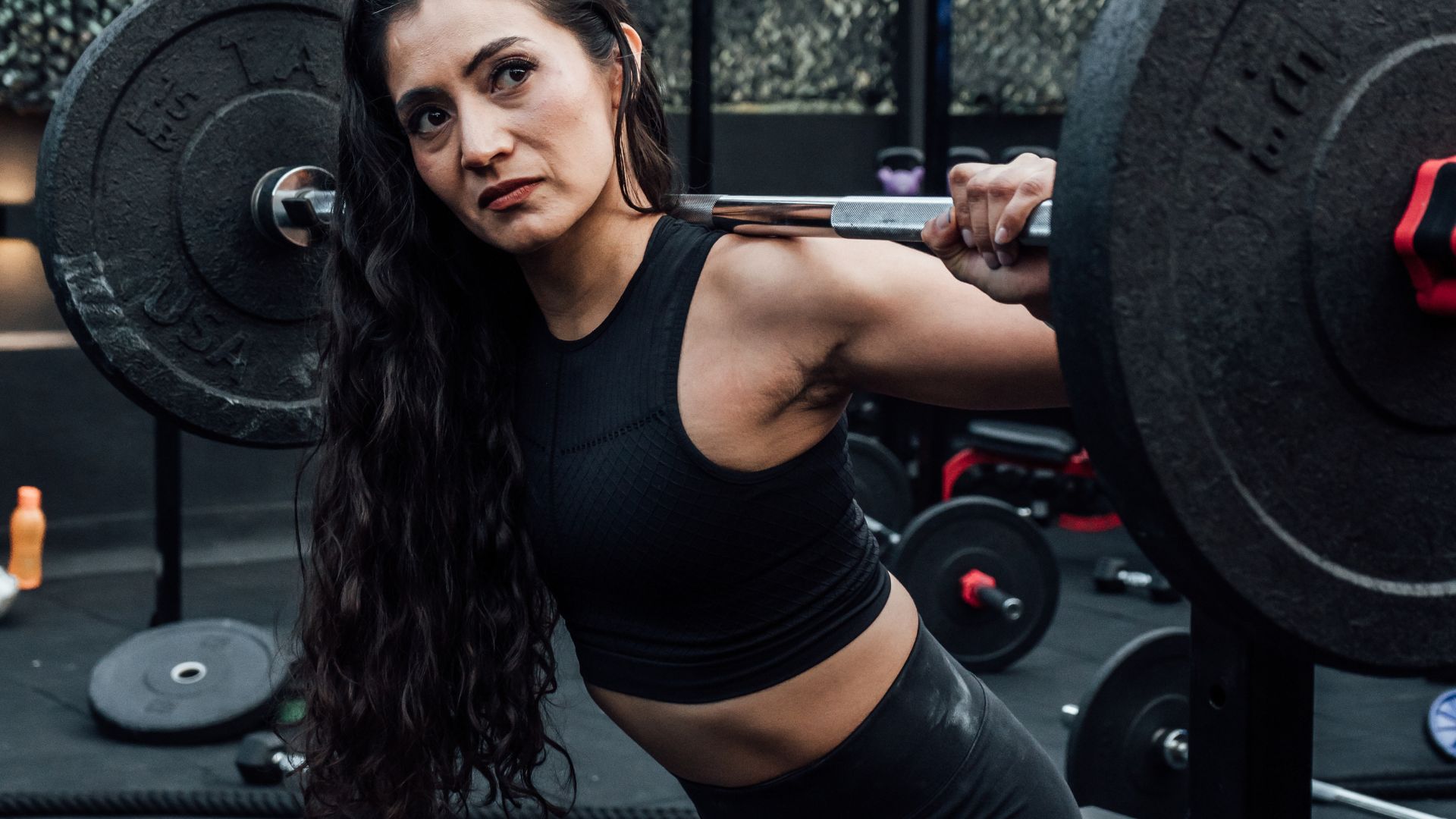Squats are one of the most popular exercises for building strength and muscle in the lower body.
They’re a compound exercise that targets multiple muscle groups, including the quads, glutes, and hamstrings.
However, one question that often arises is how wide should your stance be when performing squats?
In this article, I explain the different squat stance widths and provide a general guide to help you find the optimal stance for your body type and goals.
So, let’s dive in and discover the secrets to a perfect squat stance.
So. the width of your stance in squats depends on your body type, mobility, and goals. Generally, a shoulder-width stance is recommended for beginners, while a wider stance targets the glutes and inner thighs. A narrow stance emphasizes the quads. A good rule of thumb is to position your feet about shoulder-width apart, with toes pointed slightly outward. This translates to a distance of approximately 45-60 cm between your feet. However, it’s important to adjust your stance based on your body’s individual needs and preferences.
The width of your stance in squats depends on your body type.
The width of your stance in squats is not a one-size-fits-all approach.
It depends on various factors such as body type, mobility, and goals. For example, a person with a wider hip structure may benefit from a wider stance to achieve proper depth in their squat.
On the other hand, a person with limited mobility in their hips or ankles may find a narrower stance more comfortable.
Additionally, your goals for doing squats can also influence your stance width.
A wider stance can target the glutes and inner thighs, while a narrow stance emphasizes the quads.
Therefore, it’s essential to consider these factors when determining the optimal stance width for your squats.
A shoulder-width stance is recommended for beginners.
A shoulder-width stance is often recommended for beginners as it provides a stable base for the squat movement.
This stance allows for a comfortable and natural alignment of the feet with the hips and shoulders.
It also provides a good foundation for the development of proper squat form and technique.
On the other hand, a wider stance can target the glutes and inner thighs more effectively.
This is because a wider stance increases the range of motion in the hips, which activates these muscle groups to a greater extent during the squat.
However, a wider stance can also place more stress on the knees and lower back, so it’s important to ensure proper form and gradually increase the stance width over time.
Note that the optimal stance width for squats varies from person to person, also depending on factors such as body type, mobility, and goals, as mentioned earlier.

A narrow stance emphasizes the quads.
When it comes to strength training, your stance can have a significant impact on which muscles are being targeted during an exercise.
The width of your stance can affect how much emphasis is placed on your quads (the muscles on the front of your thighs) versus your glutes and hamstrings (the muscles on the back of your thighs).
A narrow stance, as mentioned in the text, places more emphasis on the quads.
This is because when your feet are closer together, your hips are in a more forward position, which requires your quads to work harder to extend your knees and stand up from the squat or leg press position.
On the other hand, a wider stance places more emphasis on the glutes and hamstrings.
This is because when your feet are farther apart, your hips are in a more backward position, which requires your glutes and hamstrings to work harder to extend your hips and stand up from the squat or leg press position.
So, to emphasize your quads in exercises like squats or leg presses, a narrow stance with your feet positioned about shoulder-width apart is a good rule of thumb.
This translates to a distance of approximately 45-60 cm between your feet. It’s also recommended to point your toes slightly outward to help engage the muscles on the inside of your thighs (adductors) and provide more stability.
However, note that everyone’s body is different, and what works for one person may not work for another. Experimenting with different stances and foot positions can help you find what works best for you and your goals.
Adjust your stance based on your body.
While a general rule of thumb for squat stance width can be helpful for beginners, it’s important to remember that everyone’s body is different. What works well for one person may not work as well for another.
Your individual body type, mobility, and goals should all be considered when determining the optimal stance width for your squats.
For example, a person with wider hips may find that a wider stance is more comfortable and allows them to achieve proper depth in their squat.
A person with limited mobility in their ankles or hips may find that a narrower stance is more effective for them.
your goals for doing squats can also influence your stance width.
For instance, if you’re looking to target a specific muscle group, adjusting your stance width can help you achieve that.
It’s important to listen to your body and make adjustments as needed. If you experience discomfort or pain in a certain stance, it may be a sign that you need to adjust your stance width or foot position.
It’s also important to work with a qualified fitness professional who can provide guidance and support in finding the optimal stance width for your body type and goals.
Ultimately, finding the right squat stance for your body can help you achieve better results and reduce the risk of injury.
Here is a general guide to squat stance width:
| Stance Width | Distance Between Feet (cm) | Muscles Emphasized |
|---|---|---|
| Narrow | 30-45 cm | Quads |
| Shoulder-Width | 45-60 cm | Balanced |
| Wide | 60-90 cm | Glutes, Hamstrings |
As you can see, the recommended distance between your feet for a shoulder-width stance is around 45-60 cm.
However, it’s important to adjust according to your individual needs and preferences.
For example, if you have wider hips or prefer a wider stance, you may want to try a wider stance of 60-90 cm to emphasize your glutes and hamstrings.
If you’re a beginner, starting with a shoulder-width stance is a good place to start and adjust accordingly based on your goals and comfort level.
Note that the stance width for squats can also vary depending on the specific type of squat you’re performing, such as a front squat or sumo squat. Experimenting with different stances and foot positions can help you find the optimal squat stance for your body type and goals.
Related video here-the right stance ^^
Conclusion
In conclusion, finding the optimal squat stance width depends on various factors, including body type, mobility, and goals.
While a general guide can be helpful, it’s important to listen to your body and adjust your stance accordingly. Experimenting with different stances and foot positions can also help you find the optimal squat stance for your body type and goals.
Remember to prioritize proper form and technique over weight or reps, as this will help you achieve better results and reduce the risk of injury.
By finding the right squat stance for your body, you can maximize the benefits of this powerful exercise and take your lower body strength and muscle gains to the next level.

Hey there, it’s Mike Rrsq, the Editor-in-Chief over at Jsquat.com, and I’m absolutely obsessed with all things squat fitness! I’ve been lucky enough to get some serious recognition for my work in this field. With a solid background in the fitness and wellness industry, I’ve been there right from the get-go, helping shape this website into what it is today.
You see, I’m not just the boss around here; I’m also a passionate contributor. I love sharing my insights through my articles, and trust me, they’re not your run-of-the-mill stuff. Each piece I write is a labor of love, filled with my expertise and real-world experience in the fitness universe. So, if you’re into fitness and looking for some inspiration, you’re in the right place!

